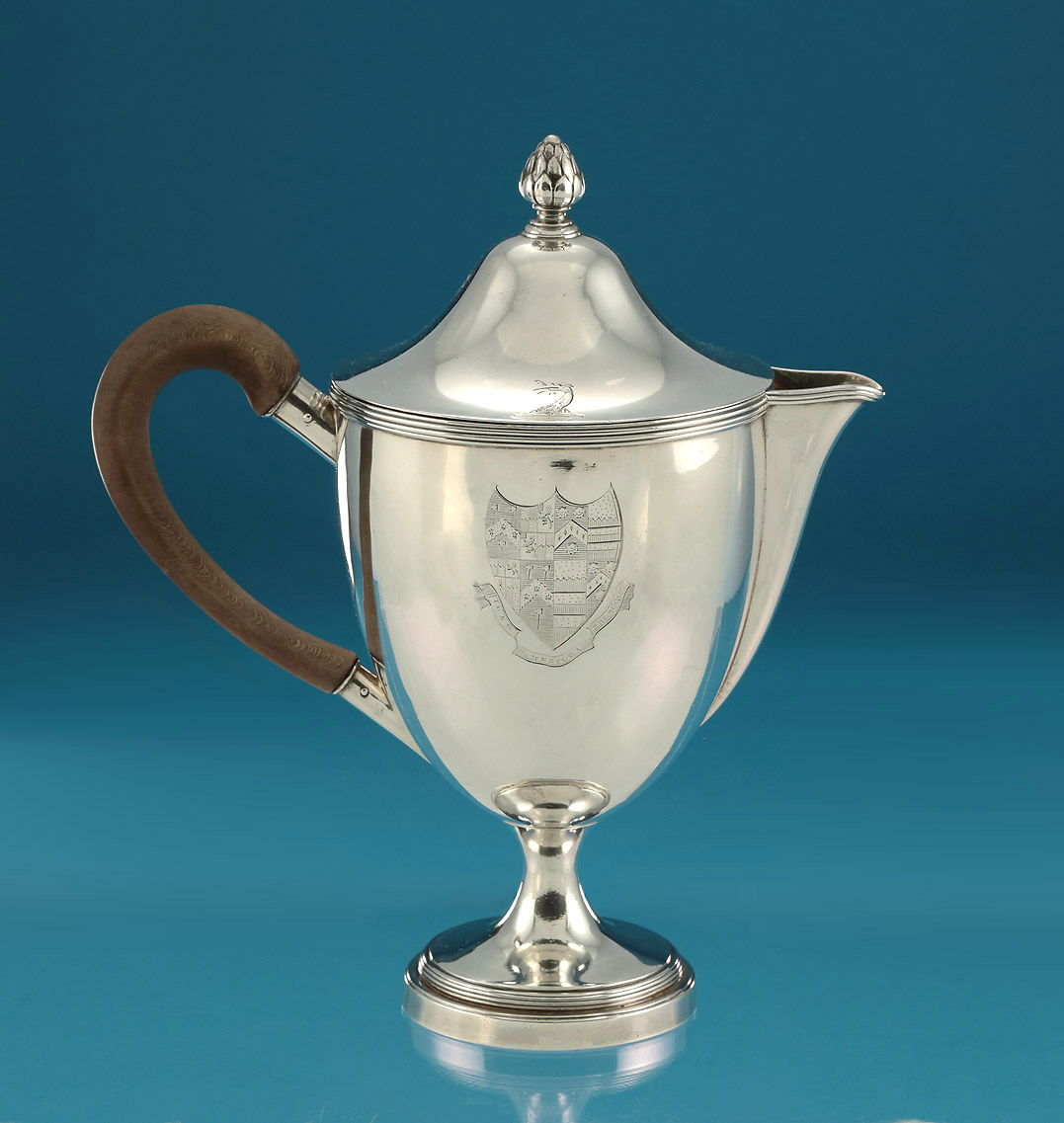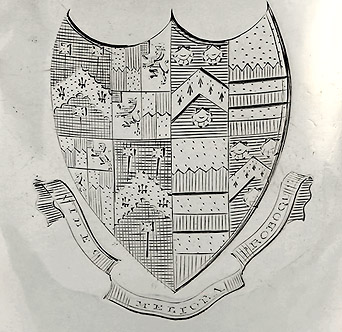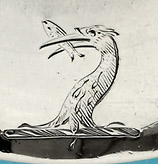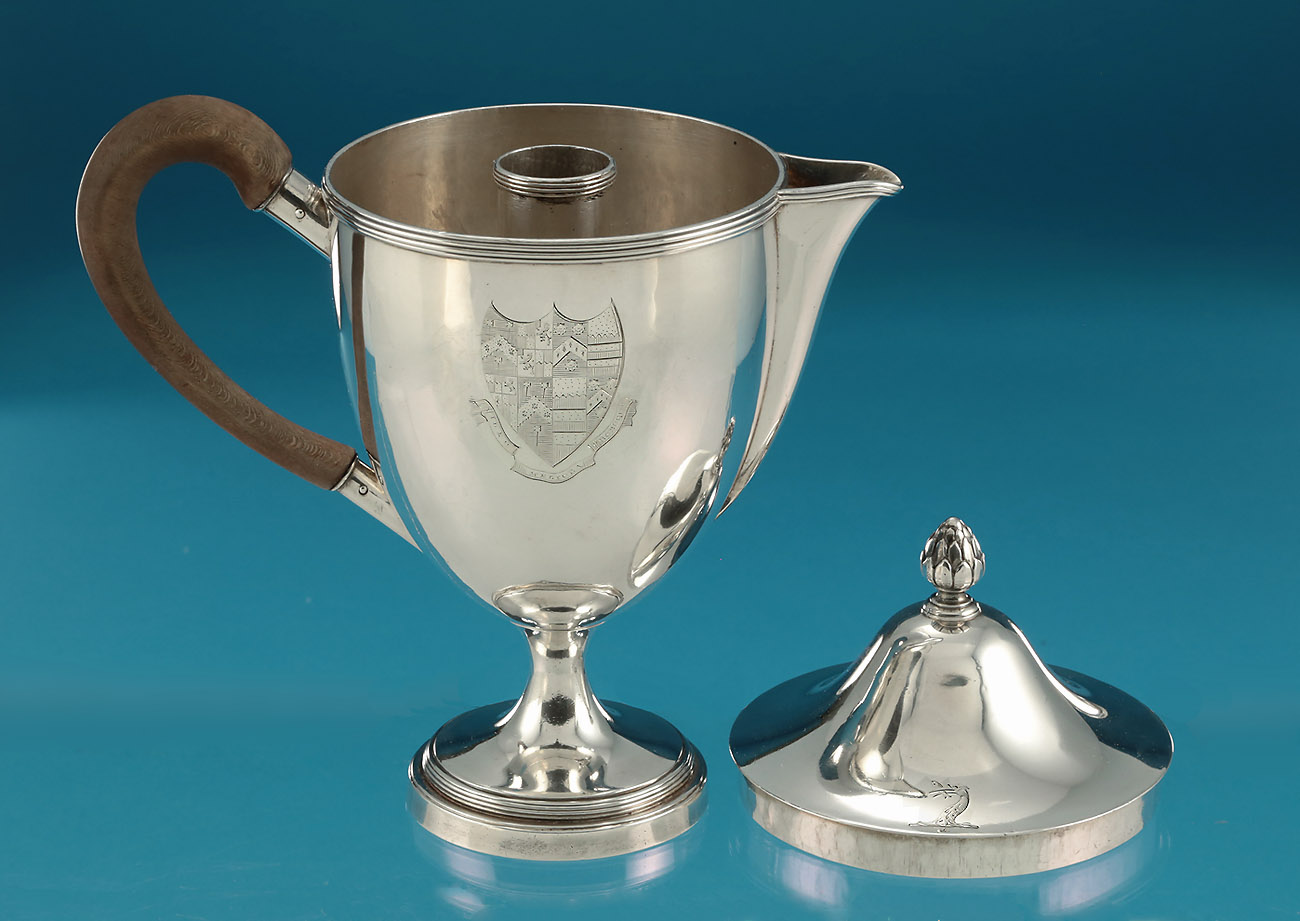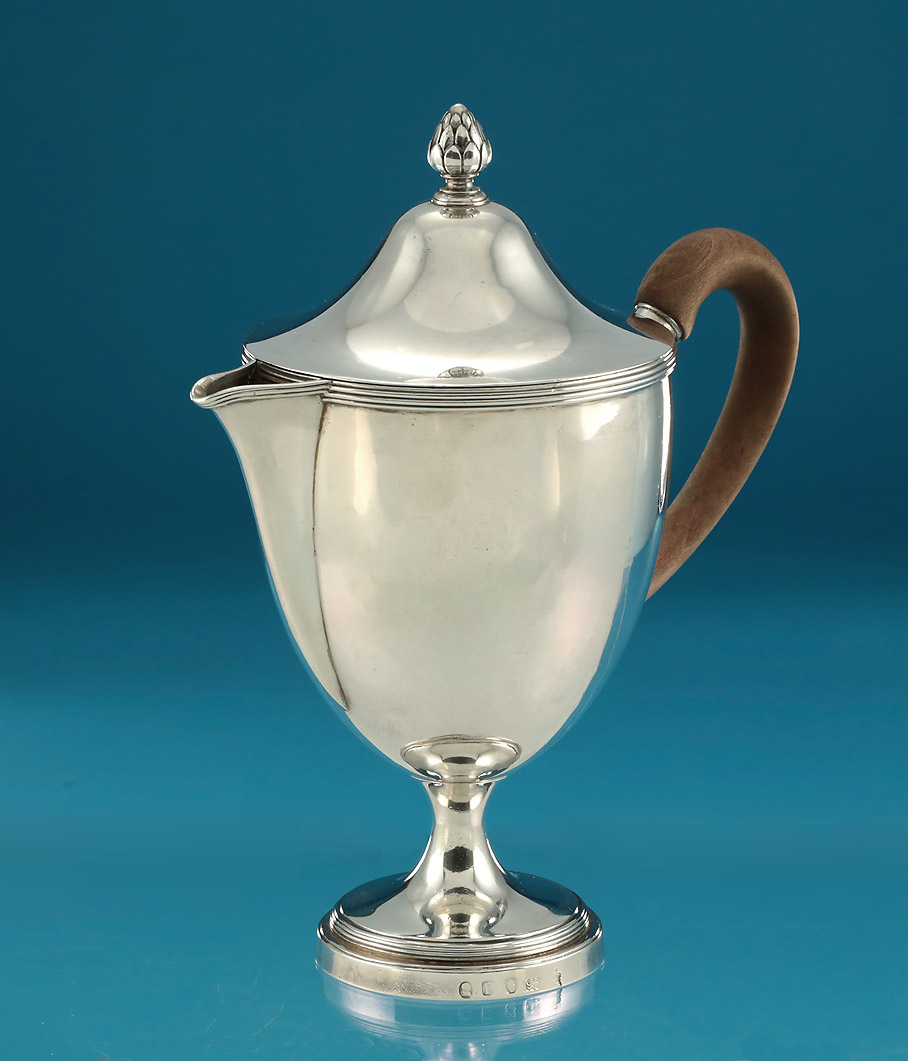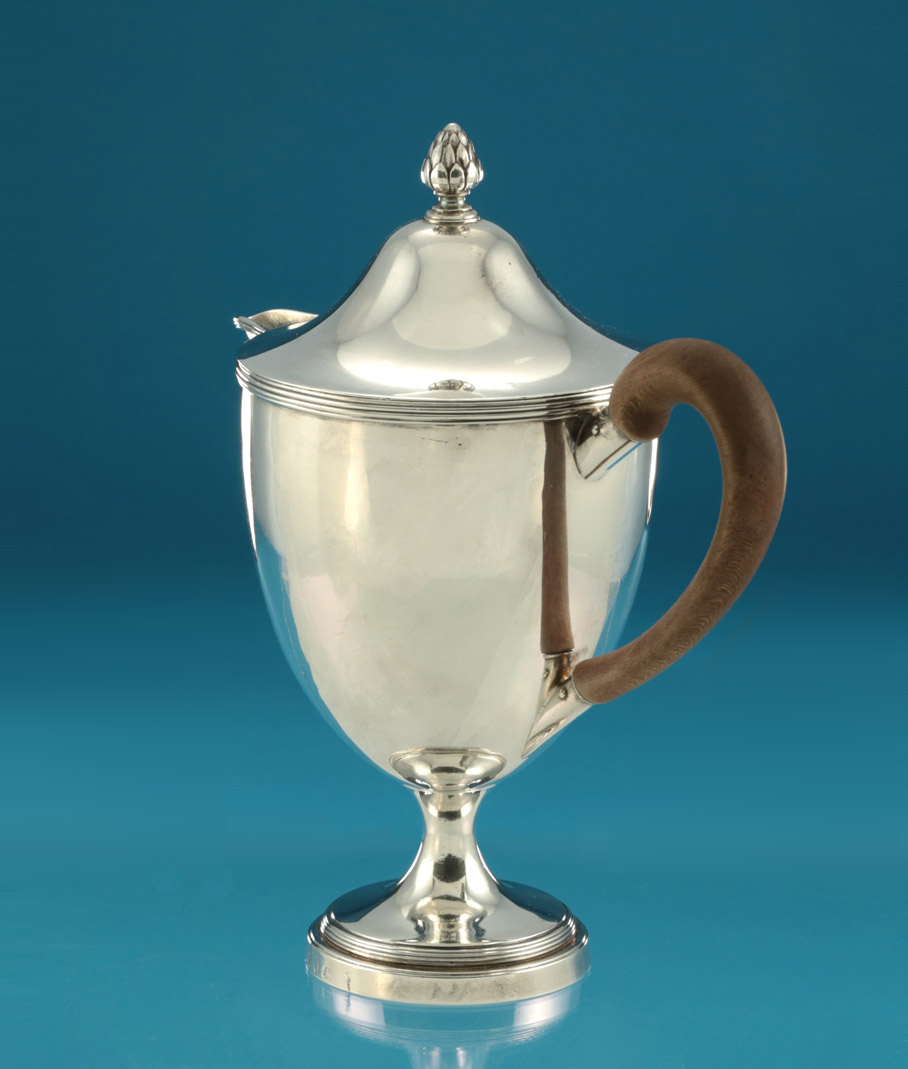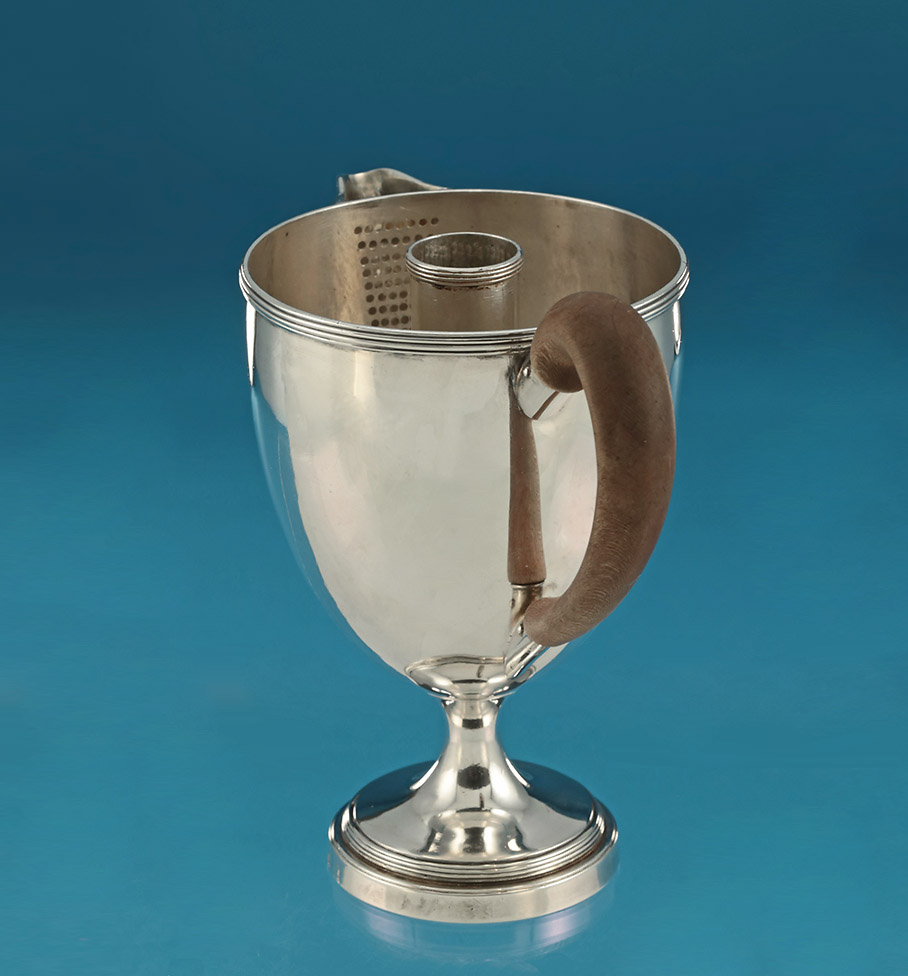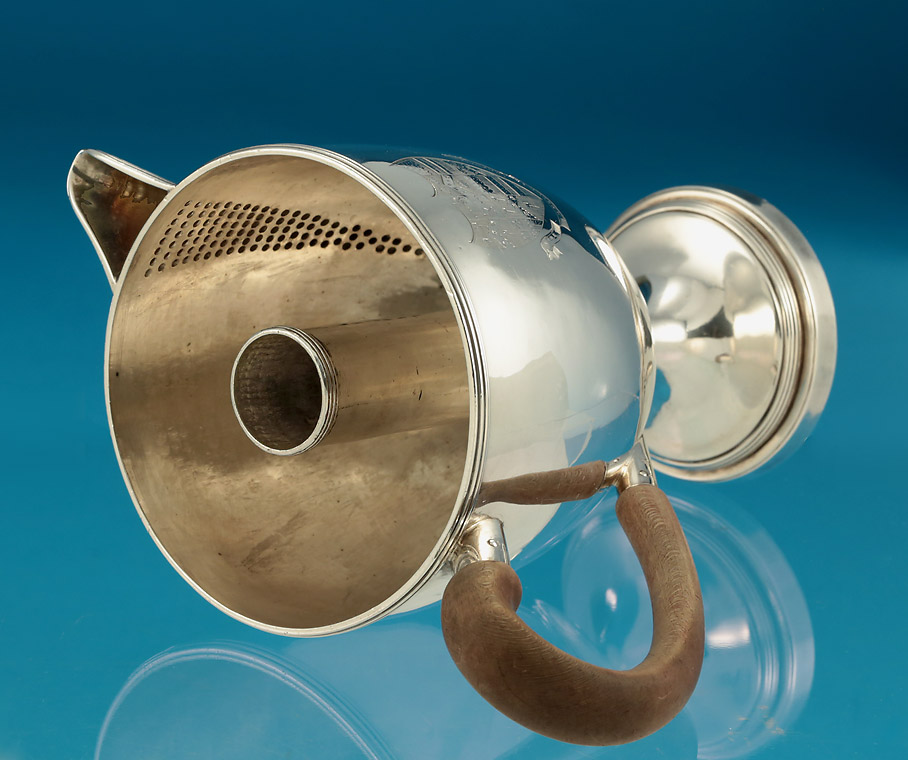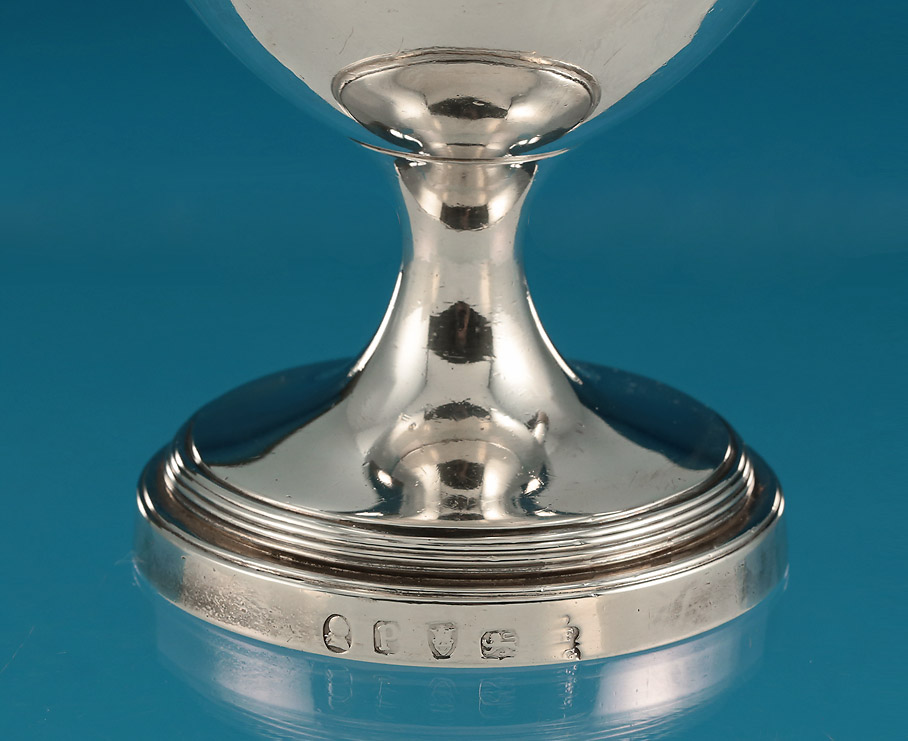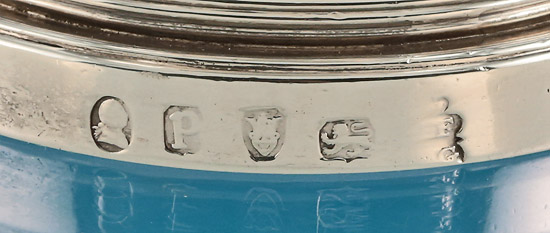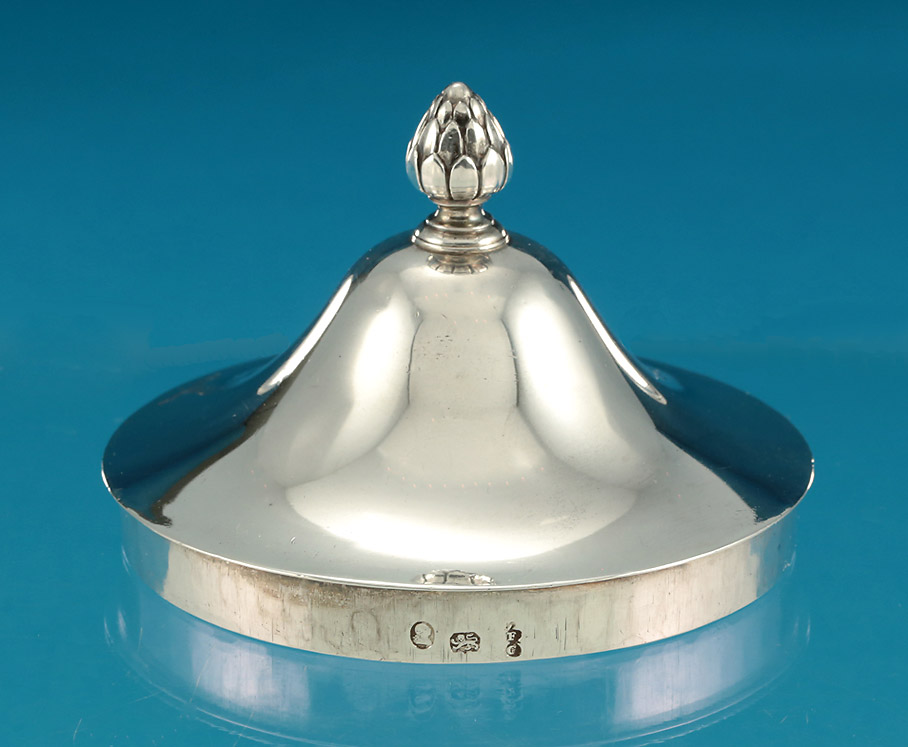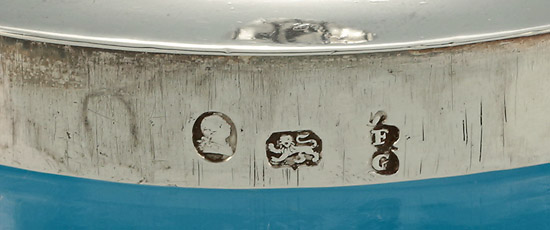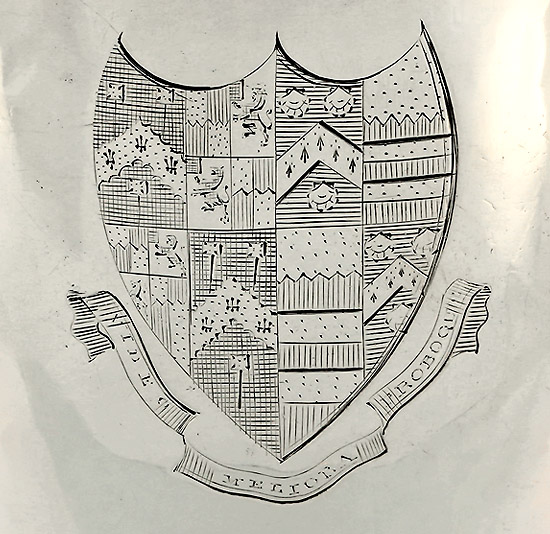The Marital Arms of Smythe and Townsend
Arms :
(on the dexter) :
Quarterly 1st and 4th Sable on a chevron engrailed or
between three crosses paty fitchy of the second three fleursde-
lis azure (for Smythe)
2nd and 3rd Quarterly 1st and 4th
Quarterly per fess indented or gules (for Leighton)
2nd and
3rd Argent a lion rampant and a canton sable (for Owen)
(on the sinister)
Quarterly 1st and 4th Azure a chevron ermine between three
escallops argent (for Townsend)
2nd and 3rd Gules two bars
or a chief indented of the last (for Hare)
The arms are those of Smythe quartering the quarterly arms of Leighton and Owen
for Owen
Smythe Owen of Condover Hall,
Shropshire, for Nicholas Owen Smythe Owen (1769-1804),
who married at All Hallows, Tottenham, on 12 July 1790, Henrietta Jemima,
daughter of James
Townsend (1737-1787) of Bruce Castle, Tottenham, and his wife Henrietta (née Hare, 1745-1785).
She was also the paternal aunt of the poet and collector, Chauncy Hare Townsend
(Townshend) (1798-1868).
The Owen family of Condover, Shropshire, extinct in the male line, descended from Richard ap Owen,
third son of Owen ap Griffith of Llunllo.
Thomas Owen of Condover, the last male descendant of this line, died unmarried in 1731,
leaving his sister, Letitia Owen (d. 1755), his heir.
She married Richard Mytton, and had a daughter, Anna Maria (1719-1750),
who was the first wife of Sir Charlton Leighton, 3rd Bt (1715-1780) of Loton.
One of their children, also Anna Maria (d. 1777), inherited from her grandmother, the said Letitia Owen, the estate of Condover.
This Anna Maria Mytton married Nicholas Smythe.
Their eldest son was the above mentioned Nicholas Owen Smythe Owen (formerly Smythe)
upon whose death without issue in
1804 Condover passed to his eldest sister's son, Edward William Pemberton (1793-1863)
who
then changed his name to Edward William Smythe Owen.
Condover Hall is an elegant three-storey pink sandstone Elizabethan building,
described as the grandest manor house in Shropshire,
standing in a conservation area on the
outskirts of Condover village,
Shropshire, England, four miles south of the county town of Shrewsbury.
A Royal manor in Anglo Saxon times, until the 16th century,
Condover Manor was in and out of Crown Tenure.
In 1586 it was purchased by Thomas Owen, a Member of Parliament for and Recorder of Shrewsbury,
from the family of the previous owner, Henry Vynar, a London merchant who had died in 1585.
Owen had had a lease of the manor from 1578.
Condover Hall continued to be owned by the Owen family until the late 1860s,
the house then passing to the Cholmondeley family. Novelist Mary Cholmondeley (1859-1925)
lived in the hall for a few months in 1896 before moving to London.
Her uncle, Reginald Cholmondeley (1826-1896), owned the house when it was
visited by the American writer Mark Twain (1835-1910) in 1873 and 1879.
The house and estate was sold by
the family in 1897 to Edward Brocklehurst Fielden, who later sold it in 1926.
The typical Elizabethan two-storey ground-floor rooms is lit by tall windows with regular mullions and double transoms.
There are fine chimneys, gables and a good example of a strapwork frieze.
The grounds are laid out in formal 17th-century style with boxed yew hedges
and sandstone balustraded terraces decorated with Italianate terracotta vases
For over sixty years from 1946 the Hall was run as a residential school, initially for blind children
when owned by the RNIB and latterly under private ownership as a school for autistic children,
covering boy boarders and coeducational day pupils.
The school and college both closed during 2009.
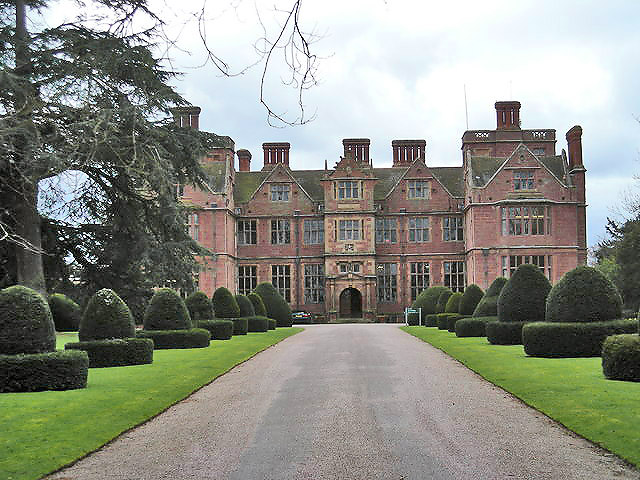
Condover Hall, near Shrewsbury, Co. Shropshire (Wikipedia.org)
Heraldry Courtesy of John Tunesi of Liongam
Hertfordshire, United Kingdom
MSc, FSA Scot, Hon FHS, QG |
